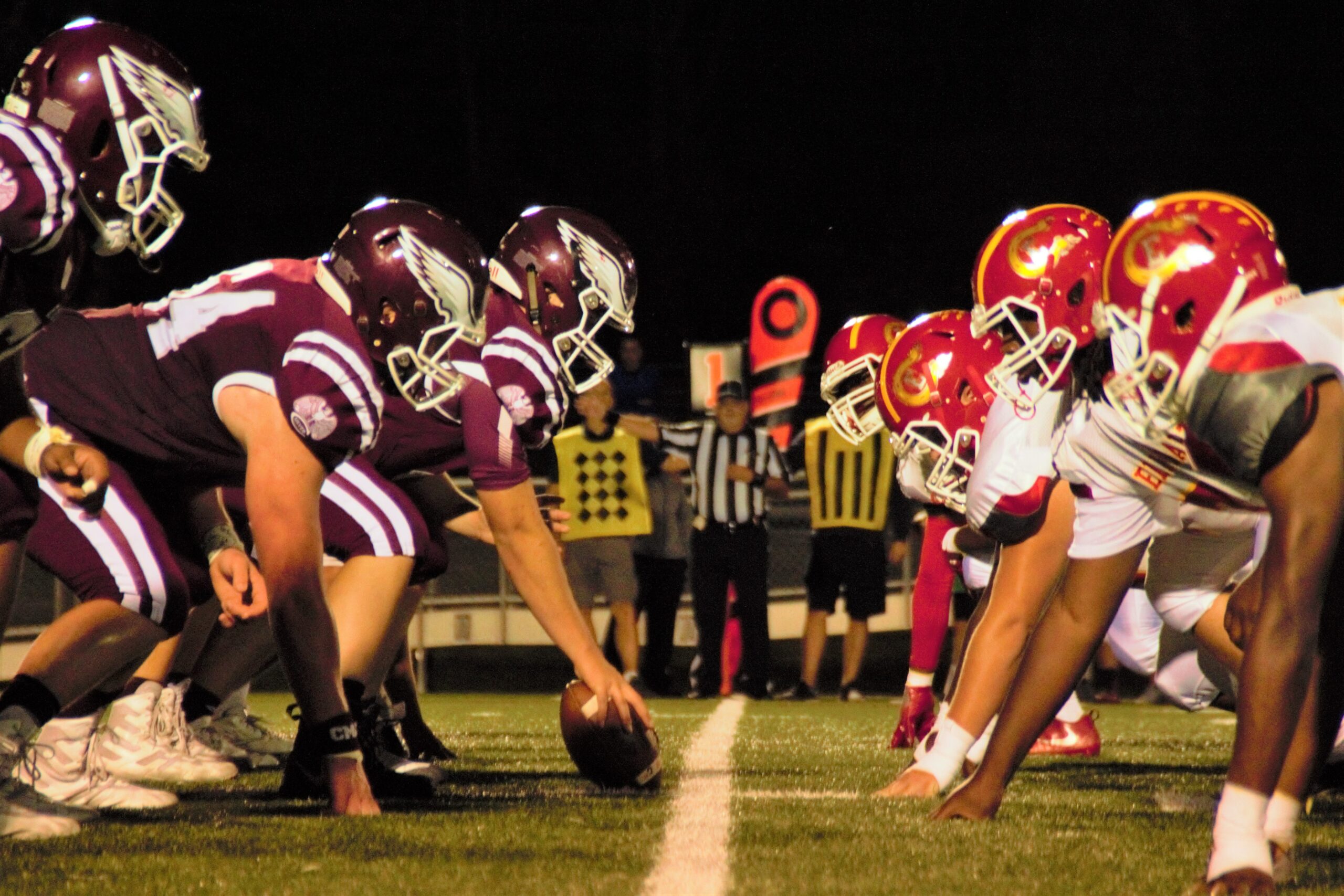The positions on the defensive line are very important in football and have a huge impact on each game.
These positions need strength, agility, and tactical acumen to pressure the opposing team’s quarterback and disrupt running plays.
A strong defense needs players in these roles to perform well and cooperate with each other.
There are two main defensive line positions: defensive tackles and defensive ends. Defensive tackles line up inside the line. They stop run plays and block, so linebackers can make tackles.
Defensive ends focus on the outside of the line. They aim to quickly get around the offensive line. This puts pressure on the quarterback, forcing hurried throws or even sacks.
Recently, some teams have started using “sub-positions” to specialize in defensive strategies. This adds more detail and complexity to the way defensive lines are organized.
In football, the defensive line is crucial. It changes based on the opposing team and game situation.
Understanding Defensive Line Positions
The D-line is crucial for stopping the other team’s run game and pressuring the quarterback.
To understand the roles and responsibilities of each player, you must know the different positions on the D-line.
In this section, we will talk about three key positions on the defensive line: Defensive Tackle, Defensive End, and Nose Tackle.
Defensive Tackle
Defensive Tackles (DT) usually line up toward the interior of the defensive line. They are powerful, agile, and are responsible for:
-
Stopping the run: Defensive Tackles must fill gaps and prevent the opposing running back from breaking through the line.
-
To put pressure on the quarterback, they need to push past offensive linemen and disrupt their rhythm by collapsing the pocket.
-
Occupying blockers helps defensive players make plays by engaging with multiple linemen.
Some teams may use one or two Defensive Tackle(s) depending on their defensive scheme.
Defensive End
🏆 Second Team CFN All-American
— College Football Network (@CFN365) August 17, 2023
🏆 First Team CFN All-Big Ten
🏆 #9 Overall Feldman’s Freak List
Penn State defensive end Chop Robinson is coming for it ALL in the 2023 #CollegeFootball season 🍿 #WeArepic.twitter.com/ECKMBuOsBR
Defensive Ends (DE) line up toward the outside of the defensive line. Their primary responsibilities include:
-
To contain the play, they need to prevent the opposing running back or quarterback from escaping.
-
The defensive ends need to put pressure on the quarterback by using speed and technique. They have to get around the offensive linemen quickly.
-
To stop the run, DEs should disrupt the opposing offensive linemen’s blocking schemes, like DTs.
To be effective, Defensive Ends need to have speed, size, and agility on the field.
Nose Tackle
Heck of a play by the nose tackle. Rookie Raymond Vohasek pic.twitter.com/nQeS0fQVhZ
— Fitz (@LaurieFitzptrck) August 19, 2023
The Nose Tackle (NT) is a unique defensive position in specific defensive schemes, such as the 3-4 defense. The Nose Tackle typically lines up directly across from the opposing team’s center and may also be referred to as a nose guard. The primary role of a Nose Tackle is:
-
The NT has to take on multiple blockers, allowing LBs and other DLs to make plays.
-
To stop the run, the NT needs to clog the middle and close gaps to prevent the running back from breaking through the line.
-
The NT can disrupt the pocket, making it harder for the QB to throw accurately.
To understand how the Defensive Tackle, Defensive End, and Nose Tackle work as a team, you need to know their roles and responsibilities. This will reveal the strength of the defensive line they form.
Conclusion
The defensive line in football is very important. They are the first defense against the other team’s offense. There are four main positions on defense: defensive tackles and defensive ends. Each position has different responsibilities. They stop the run game and put pressure on the quarterback while maintaining alignment.
Defensive linemen need different skills, like strength, power, agility, and quickness. Defensive ends are usually faster and more agile. Defensive tackles rely on their strength to overpower offensive linemen.
The 4-3 or 3-4 determine how many linemen play defense in different formations. This ensures that the defense adapts to the evolving strategies and play styles of the opposing team. A good defense needs a strong defensive line to stop the offense and force turnovers.

